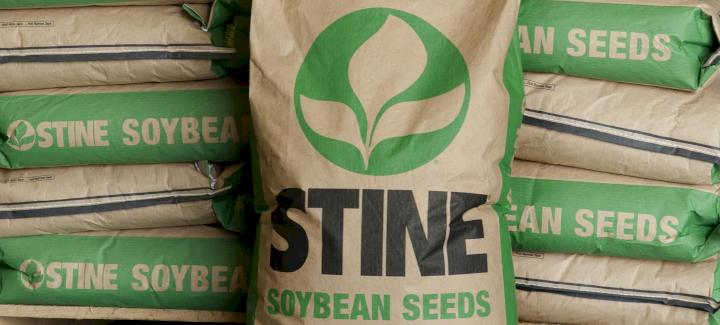
Why choose Stine corn and soybeans for 2024? The simple answer is genetics, options and service.
“STINE HAS YIELD isn’t just our brand promise; it’s how we operate, and it’s at the core of every decision we make as a company,” says Myron Stine, company president. “Stine has the best genetics, the most robust product offerings and the most knowledgeable reps in the industry. When combined, we deliver the resources grower customers need to achieve top-end yield.”
Genetics
Stine has one of the industry’s largest corn and soybean breeding programs, which means we’re testing more new genetics than our competitors. We operate with the knowledge that breeding is a numbers game — the more material you look at, the better your chances of finding the best. We won’t release any genetic material if it doesn’t have proven yield performance in our program. Our approach to breeding is why most of the soybean genetics planted in the United States today started with Stine and why we can deliver new corn genetics to growers’ fields faster than other seed companies.
Options
Because of our access to our own genetic material and the industry’s leading trait platforms, we can deliver more new options than our competitors year after year. This is a big differentiator for us. For soybeans, this is critical as there’s more adaption of the Enlist E3® trait than ever before. Stine is well placed for growers using this platform as we have the BEST the industry offers, bar none. Our 2024 soybean lineup includes:
- 109 lines of Stine brand Enlist E3 soybeans, ranging from 0008 to 77 maturity.
- Five lines of Stine brand LibertyLink® GT27® soybeans, ranging from 04 to 34 maturity.
- 23 options of Stine brand XtendFlex® soybeans, ranging from 08 to 50 maturity.
- 28 options of Stine Elite conventional soybeans, ranging from 02 to 53 maturity.
Whether you’re in the market for short corn or a traited product with outstanding above- and below-ground insect protection, Stine has the corn lineup you need. Options include:
- 13 Agrisure®-traited lines featuring Stine genetics, including some from our elite MX Series Corn lineup, with options ranging from 83–85-day to 117–119-day relative maturity.
- 14 Stine GT lines, ranging from 103–105-day to 114–116-day relative maturity.
- Two Stine GT+ lines— an 85–87-day and a 101–103-day, including one of our MX Series brand corn options.
- 11 MX Series Corn lines, ranging from 95–97-day to 113–115-day relative maturity.
- Three conventional lines, ranging from a 109–111-day to a 110–112-day product.
service
“We’re particular about who we hire to support our grower customers,” says Stine. “We have the best and most knowledgeable employees and sales reps … period.”
Our dedicated workforce will do what it takes to fulfill our STINE HAS YIELD promise and deliver value so grower customers can move the needle to higher yields. We work with hundreds of independent sales reps across the country who are passionate about their role in the ag industry and committed to supporting their grower customers when and where they need them. Our talented employees are well-versed in various areas of expertise, including research, data analysis, sales support, marketing and more. Our agronomy team understands success in the field goes well beyond putting the best seed in the ground. They are available to our customers and sales team to guide them on the agronomics of our products, best practices for field placement and maintaining yield throughout the season.
If you’re looking for a seed company that understands the everyday needs of farming and how products perform in specific environments, look no further than Stine. Contact your local sales rep today. View our 2024 Stine Seed Catalog here.
Related Articles
-

Stine® to offer Syngenta’s Victrato® soybean seed treatment in 2026
December 2025 in Agronomy
-

Use Stine’s XP® seed treatments to prevent early injury to your crops
December 2025 in Agronomy
-

Understanding Stine’s enhanced oil profile soybeans
December 2025 in Agronomy
-

Soil sampling sets the stage for spring
November 2025 in Agronomy



